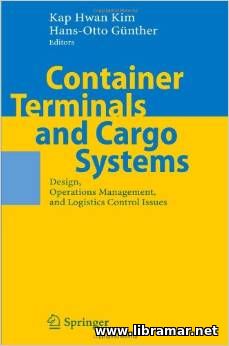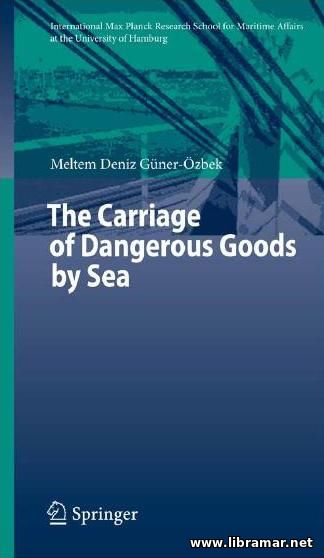 The present publication was prepared and released with the ultimate intention to provide all people engaged in the international maritime transportation of the hazardous and dangerous cargoes with the single unit containing the descriptions of all necessary technical terminology.
It is a truly unique and highly usable reference and training resource to be used at all times by the shippers for the quick and correct identification of the materials they carry. This knowledge and understanding is absolutely necessary to make sure that the appropriate safety precautions are in place. The volume has already proven very useful for the professionals representing not only technical, but also commercial parties.
We all know that the terms used today can be quite vague and sometimes even confusing so that the grey areas arise, that may potentially lead to the ambiguities and even dangerous situations on board, with the potential risks to the human lives, safety of the vessel and the environment. In fact, this title is the first one to provide people with the accurate and crystal clear explanations and as such shall be readily available to all transporters and shippers of the subject materials.
 This present Guide book was developed by the ICS, standing for the "International Chamber of Shipping" - the organization concerned with the operational safety of vessels, together with the WSC, i.e. World Shipping Council, who are representing one of the leading container lines in the world.
The opportunity was taken by the authors of these guidelines to undertake a thorough review of the established best practices in the world's containership industry. Their efforts resulted in the present Guidelines, aimed to be helpful to all people involved in marine transportation of the containers. The instructions that have been included in this book will for sure contribute to the efficiency of container transportation and protection of cargo; however, it shall be kept in mind that the main and most important objective of this booklet is to ensure that the operational safety remains on top. The guidelines were prepared using the best info available. Note that it is used on the risk of the user.
Apart from the intro, the book contains eight chapters addressing the regulations governing the transportation of the containers, giving some overview of the containers, explaining the shipping line stowage co-ordination, container stuffing and marine terminal operations, etc. The responsibilities of the ship's crew and master have also been covered.
 The present publication is aimed not only at seamen but also at the marine surveyors and ship superintendents, as well as the riggers, cargo operators and all other workers engaged in handling the shipboard cargo. The author has managed to cover literally all aspects including but not limited to the materials commonly used for cargo lashing, utilizing ISO containers, cost calculation, welding procedures, conversion factors, and many others.
In fact, the number of the factors to consider is huge, making the task quite complex. The people assigned with the responsibility for cargo handling shall possess sound knowledge of the behavior of the various cargo lashing systems under different circumstances, meaning the loads applied. There are seven main chapters in this volume, covering all required areas, starting with the general information on deck cargo handling, followed with the introduction to the generally used lashing materials.
The strength/lashing arrangements are discussed in the third chapter, while the fourth one is devoted to the timber deck cargo. The remaining chapters cover the ro-ro ships, vehicle carriers, lashing costs and other valuable information.
 The official 2011 edition of the CSS Code, including the revised guidelines for the preparation of the CSM (Cargo Securing Manual). The correct securing and stowage of the cargo transported on board ships is of the critical importance for the safety of the vessel and the crew at sea.
Wrong stowage or securing of the cargo has already resulted in so many casualties, causing numerous injuries and deaths - and some of them happened not at sea but also ashore, at the terminals, in the course of the loading and discharge operations. In the attempt to reduce the number and significance of hazards and problems that arise from the improper securing and storage of the cargoes on vessels, the IMO has released the Guidelines that may be either in the form of Assembly resolutions, or in the form of circulars adopted by MSC...
The purpose of this CSS Code is to provide the workers of the shipping industry with the recognized international standard in order to further promote the safe stowage/securing of the transported cargoes by drawing due attention of ship operators and owners to the need to ensure that the vessel really suits for the purpose, and by providing practical instructions on how to make sure that the vessel has been equipped with all required means of securing cargo...
 This publication with quite self-explanatory title prepared by the duet of authors, namely Kap Hwan Kim and Hans-Otto Gunther, presents the latest insights and most successful solutions to the operational problems related to the auto cargo systems and container terminals.
It comprises a number of reports addressing the situation in the container shipping industry of today, different applications of the various quantitative methods, simulation results and various case studies. The authors have divided this useful publication into three main parts - the first part is introductory while the other two parts are dedicated to the container terminals and cargo systems. Today, the logistics and cargo transportation involve the computer-based simulation and various optimization techniques, playing truly invaluable roles in analyzing the design and operation options.
The authors made a good attempt to focus on such important matters as the design issues, operations management and logistics control as applied to the seaport container terminals. As the result, this publication may provide readers with a perfect overview of the latest developments in these areas and shall be used as the resource for those looking for the effective scientific solutions to the existing problems as well as by the researchers trying to reveal the potential problems...
 Today, the number and amount of the dangerous cargoes carried by sea is increases every year. The newly established international technical standards have been adopted as an obvious result of the serious worldwide concern with the transportation risk which is posed by the significantly increased frequency of transportation events. In addition to all stated above, the environmental awareness and recent concern with financial implication of marine casualties resulted in the new regulations of compensation and liability.
The maritime transportation of such goods focuses mostly on damage or loss of cargoes. For sure, there are so many popular books, technical articles and discussions on this matter; however, the issue of damage or loss from the goods has always been paid little to no attention. The six major chapters of this book address the regulations related to the carriage of the dangerous goods, meaning of such goods, duties of all parties involved in the cargo transportation, their liabilities and rights, limitation of liability and insurance, and 3rd-party liability for the damage that is arising from the marine transportation of HNS, i.e. hazardous and noxious substances.
The history of marine transportation of dangerous cargoes is very old and the dangers involved have grown with the development of new technologies and with the passage of time...
 The crude oil is maybe the most important cargo of those transported by sea over the last century. It provides people with the energy necessary to drive virtually everything. The present book was written by Captain P. Armitage with the ultimate intention to serve as a mandatory training for the second officers willing to move up to the position of Chief Officer - in fact it will be useful to every single ship officer working on a tanker and standing a cargo watch.
The content of this volume is covering absolutely everything starting from the fundamentals of the crude oil chemistry and up to the economics of today's oil market. Loading and discharge operations are deservedly treated as the critically important activities. When carrying out loading and discharge of the shipboard cargo, the accidents may seriously compromise the safety of the crew members, the ship herself as well as the environment.
Well developed and carefully reviewed plans supplemented with the standing instructions and established emergency procedures will significantly contribute to the success of the cargo operations and provide additional flexibility to the commercial operators. This volume puts decades of the practical experience into a quite concise format which is technical but still reader friendly. A copy of this book shall be in the library of every tanker officer for easy and ready reference at all times.
 As it is clear from the title of the volume, it contains the Rickmers Standard which is deservedly considered the major reference source for planning and handling of the project cargo handling, as well as stowage, securing and lashing of such cargoes. The main purpose of this Standard is to let all parties involved, including shippers and stevedores, to get informed about the established cargo handling and cargo securing practices that have proven effective.
Following these procedures will contribute in the improvement of the technical and commercial performance and this will be achieved by avoiding or at least minimizing the loss and damage of the cargoes transported on board ships. This all, in turn, will eventually result in the improved safety of the people and cargo at sea together with the improved environment protection.
The content of the Standard is arranged in three big sections, namely pre-shipment info for the shippers and ship agents, standards to be applied to lifting, bedding and securing cargoes, and assessing the shipboard securing and stowage arrangements for their compliance with the provisions of the standard. Four annexes provide some additional information and a glossary of terminology used throughout the Standard.
|







